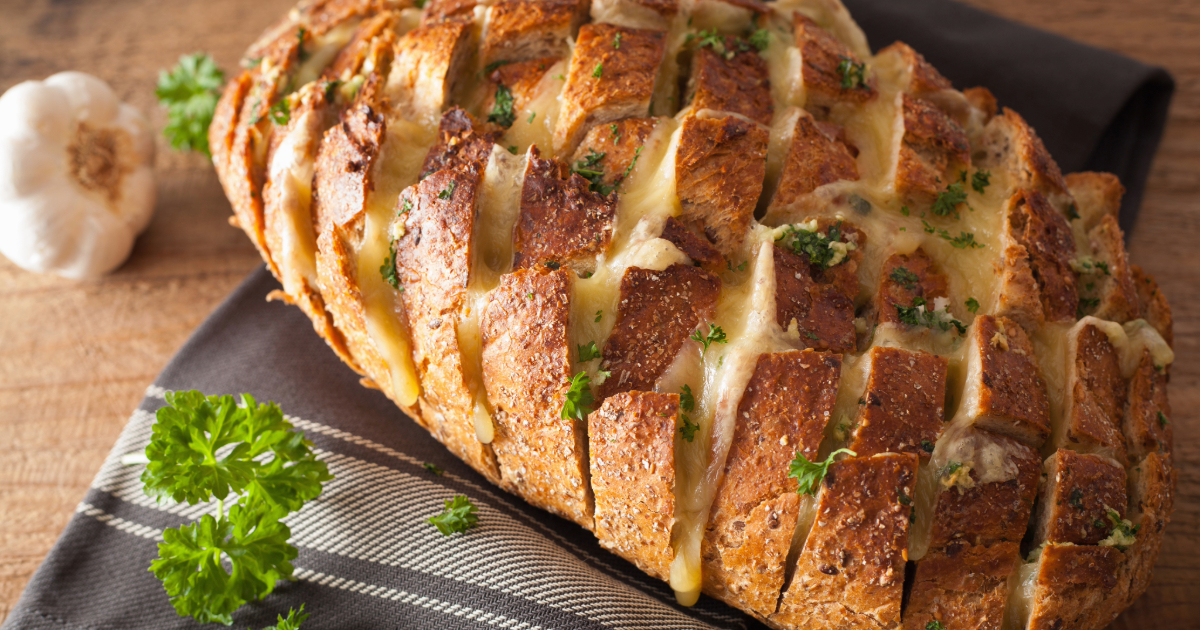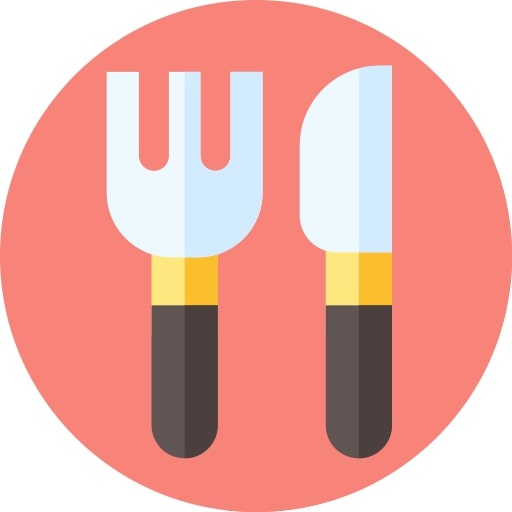Cheese loaf is a tasty quick bread that is simple to prepare at home. It combines bread dough with ribboned swirls or chunks of cheese baked inside, creating a savory and indulgent treat.

Cheese loaf makes an excellent snack, breakfast, or accompaniment to a meal.
The possibilities are endless when it comes to customizing it to suit your tastes too.
You can swap different cheese varieties or mix in herbs, vegetables, meats and more to create your own signature loaf.
What is Cheese Loaf?
Cheese loaf refers to any bread loaf with cheese incorporated into the dough or baked inside. Rather than a topping that is added after baking, the cheese becomes melty and strings throughout the interior crumb.
Common varieties are quick breads leavened with baking powder. However cheese enriched yeast breads also qualify.
It differs from cheese bread in that the entire interior contains cheese rather than just swirled through. Cheese crown bread would be an example of the latter.
You'll find many cheese loaf recipes are no knead or require minimal hands on effort. So they are faster and easier to throw together than traditional risen loaves.
The texture strikes a nice balance between soft yet sturdy enough to slice. Expect a tender, velvety crumb punctuated by gooey pockets of cheese.
Key Takeaway: Cheese loaf has ribbons of melted cheese distributed evenly throughout rather than in pockets or swirls.
How is Cheese Loaf Made?
Making cheese loaf involves incorporating shredded cheese directly into bread dough, then baking it in a loaf pan. This can be done with:
- Quick bread dough leavened with baking powder
- Yeast bread using active dry yeast or instant yeast (rapid rise)
Here is an overview of the basic method:
Quick Cheese Loaf Method
- Mix together dry ingredients - flour, leavener (baking powder), salt
- Stir in shredded cheese until evenly distributed
- Add wet ingredients - milk, eggs, butter/oil
- Mix just until combined into a shaggy dough
- Spoon batter into a greased loaf pan
- Bake until golden brown and a toothpick inserted comes out clean
Yeast Cheese Loaf Method
- Activate yeast by dissolving in warm liquid
- Mix in flour, salt to form a shaggy dough
- Allow dough to rise until doubled in size
- Punch down, fold in shredded cheese reserving some for topping
- Shape dough and add cheese topping
- Second rise to allow yeast to puff it up
- Bake covered initially, then uncover to brown it
The main difference is that yeast loaves undergo two risings whereas quick bread batters do not. Otherwise the process of incorporating cheese remains largely the same.
Tips for the Best Homemade Cheese Loaf
Follow these tips for cheese loaf with gorgeous rise, melt-in-your-mouth texture and full flavored cheese taste:
- Use good melting cheeses - cheddar, colby, gruyere, gouda, asiago. Avoid low moisture cheeses like parmesan.
- Grate cheese from a block rather than pre-shredded which has anti-caking agents that inhibit melting.
- Add plenty of cheese - using 2 to 2 1/2 cups cheese per loaf ensures plenty of flavor.
- Slice just baked cheese loaves once cooled 10 minutes - cutting into hot dough causes deflation.
For quick breads:
- Don't overmix batter once liquid added otherwise gluten overdevelops causing toughness
- Check for doneness earlier than recipe states as cheese causes faster browning
For yeast dough:
- Slightly increase yeast to account for cheese weighing dough down
- Give adequate rise times for the best oven spring and domed top
- Use bread flour for superior rise and chewiness (AP flour still works)
Key Takeaway: Grate cheese off the block rather than using pre-shredded for the meltiest cheese ribbons.
Pro Tip: Underbake yeast cheese loaves very slightly, the abundant cheese will continue carrying over the cooking process as it sets up.
Delicious Cheese Loaf Flavor Variations
Plain cheese loaf is difficult to beat. However you can customize yours by:
- Swapping different cheese varieties - cheddar, gruyere, gouda, pepper jack, colby jack
- Mixing two or more cheeses for more complex flavor
- Stirring in herbs, spices, garlic, onions, sun dried tomatoes
- Folding in cooked vegetables - caramelized onions, mushrooms, spinach, bell peppers
- Adding cured or cooked meats - bacon, ham, sausage, pepperoni
Some tasty cheese loaf combinations include:
- Asiago cheese and Italian herbs
- Cheddar, bacon and scallions
- Pepper jack and jalapeños
- Feta, spinach and sun dried tomatoes
- Gruyere and caramelized onions
Feel free to get creative with mix-ins that suit your tastes!
The following are some reader suggestions:
- Lipton French Onion soup mix
- Rosemary and garlic
- Romano, parmesan, asiago blend with Italian herbs
Pro Tip: Save some of the shredded cheese for topping to get both melty interior ribbons and a crispy cheese crust.
How to Serve Cheese Loaf
Warm cheese loaf straight from the oven requires nothing more than a fork and knife to be enjoyed. The cheese will be oozing out and the tender crumb is at its prime.
However it also makes for excellent:
- Breakfast or brunch - slice and serve like banana bread
- Sandwiches - toast slices then stack with fixings
- Pairing alongside soup or salad - the bread improves dunkability!
- Snack or appetizer - slice and serve bread bites
- Bruschetta or crostini - top baguette slices with cheese loaf then broil
Having cheese loaf leftovers isn't the worst thing either! They keep well wrapped at room temperature for a couple days.
Beyond that, revived leftover slices in the toaster, oven or skillet to crisp up the edges while melting the cheese pockets. Slather with butter or brush with olive oil for added richness.
FAQs
What cheese works best in cheese loaf?
Good melting cheeses that evenly incorporate without breaking or leaking oils yield the best results. Harder cheeses like cheddar, colby, gruyere, gouda, asiago hold their shape when baked into bread. Soft fresh cheeses become too oozy. Pre-shredded cheese contains anti-caking agents that inhibit thorough melting.
Should I make cheese loaf from quick bread or yeast dough?
Both methods work beautifully! Quick cheese loaves come together faster. Yeast-risen loaves require two rises but result in a springier interior and crusty exterior.
Can I freeze cheese loaf?
Yes! Fully cooled cheese loaves wrap well for the freezer, lasting 2-3 months. Thaw overnight in the fridge then revive in oven, toaster or pan before serving. Yeast dough freezes better than quick batter.
What temperature and how long do I bake cheese loaf?
Quick bread cheese loaf bakes at 350°F for 30-40 minutes until deep golden brown and a toothpick inserted in center comes out clean.
Yeast dough should get an initial covered bake at 375°F for 35 minutes to properly rise, then uncovered at 450°F for 10 minutes finishing. Check a few minutes early as abundant cheese causes faster browning.
Why does my cheese loaf look pale or have a sunken center?
Pale color and lack of rise indicates underbaked dough. Be sure to use instant read thermometer to confirm loaf has reached 205-210°F internal temperature. Sunken centers happen if cheese loaf cools in the pan too long after baking rather than being removed immediately to a cooling rack.
Conclusion
Cheese loaf combines the comfort of homemade bread with everyone's favorite melty, gooey cheese. Ribbons of cheese get suspended throughout a your choice of quick bread or yeast dough before baking.
The end result is an indulgent, bakery-worthy loaf that makes an easy crowd-pleasing snack, breakfast, sandwich and more.
It requires no special skills to make delicious cheese loaf at home. Simply incorporate plenty of freshly shredded cheese into the dough, allow it to rise if using yeast, then bake until golden and irresistible.

